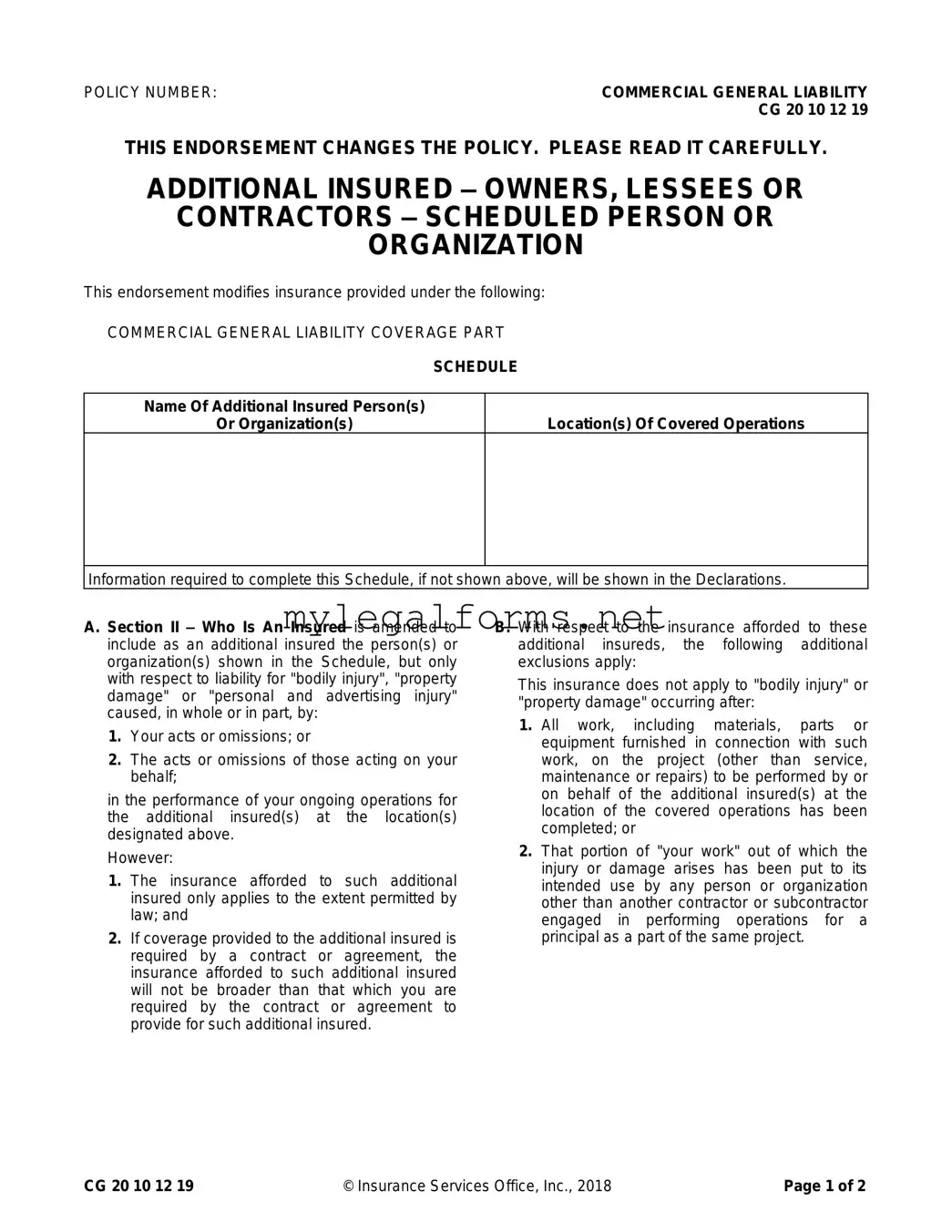Filling out the CG 20 10 07 04 Liability Endorsement form can be a straightforward process, but several common mistakes can lead to complications. One frequent error is failing to accurately list the name of the additional insured. This information must be precise, as any discrepancies may result in coverage issues. Individuals should ensure that the names are spelled correctly and match the legal entities involved.
Another common mistake involves omitting the location of covered operations. This section is crucial because it specifies where the coverage applies. Incomplete or vague descriptions can create confusion and may lead to denied claims. It is important to provide clear and specific locations to avoid potential disputes.
Many individuals also overlook the requirement to include all necessary information in the declarations. If certain details are not shown in the form, they must be included in the declarations section. Failing to do so can result in incomplete coverage, leaving the insured vulnerable in the event of a claim.
Incorrectly interpreting the scope of coverage is another issue that arises. Some may mistakenly believe that the endorsement provides broader coverage than what is stipulated in the contract or agreement. It is essential to understand that the coverage afforded to the additional insured cannot exceed what is required by the contract.
Additionally, individuals often neglect to review the additional exclusions that apply to the insurance. Understanding these exclusions is vital, as they can significantly impact the coverage provided. For instance, if the work has already been completed or the project has been put to its intended use, coverage may not apply, which can lead to unexpected liabilities.
Another mistake is failing to consider the limits of insurance specified in the form. The endorsement does not increase the applicable limits; thus, it is critical to be aware of the maximum amounts that can be claimed. Misunderstanding this can lead to financial shortfalls when claims arise.
Finally, individuals may rush through the completion of the form, leading to a lack of thoroughness. Taking the time to review each section carefully can prevent errors and ensure that all necessary information is accurately captured. A meticulous approach is essential for effective risk management and to secure the appropriate coverage.

